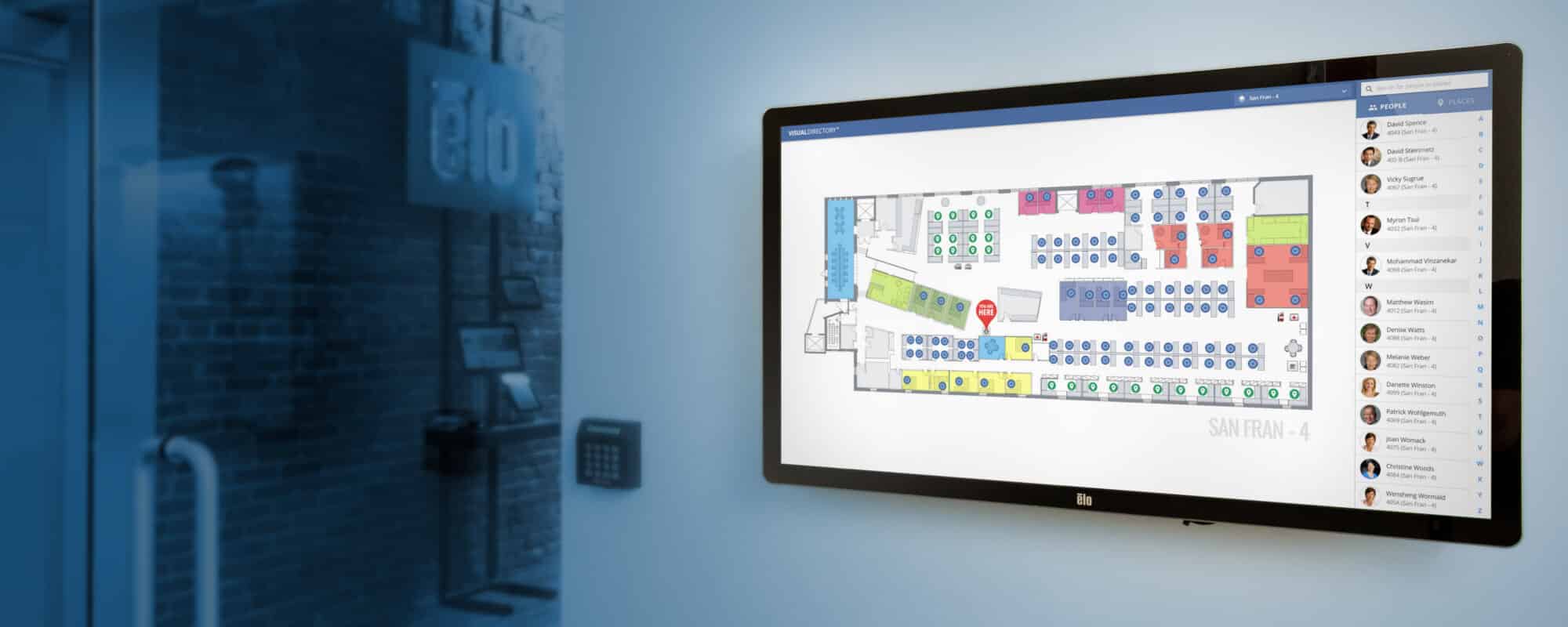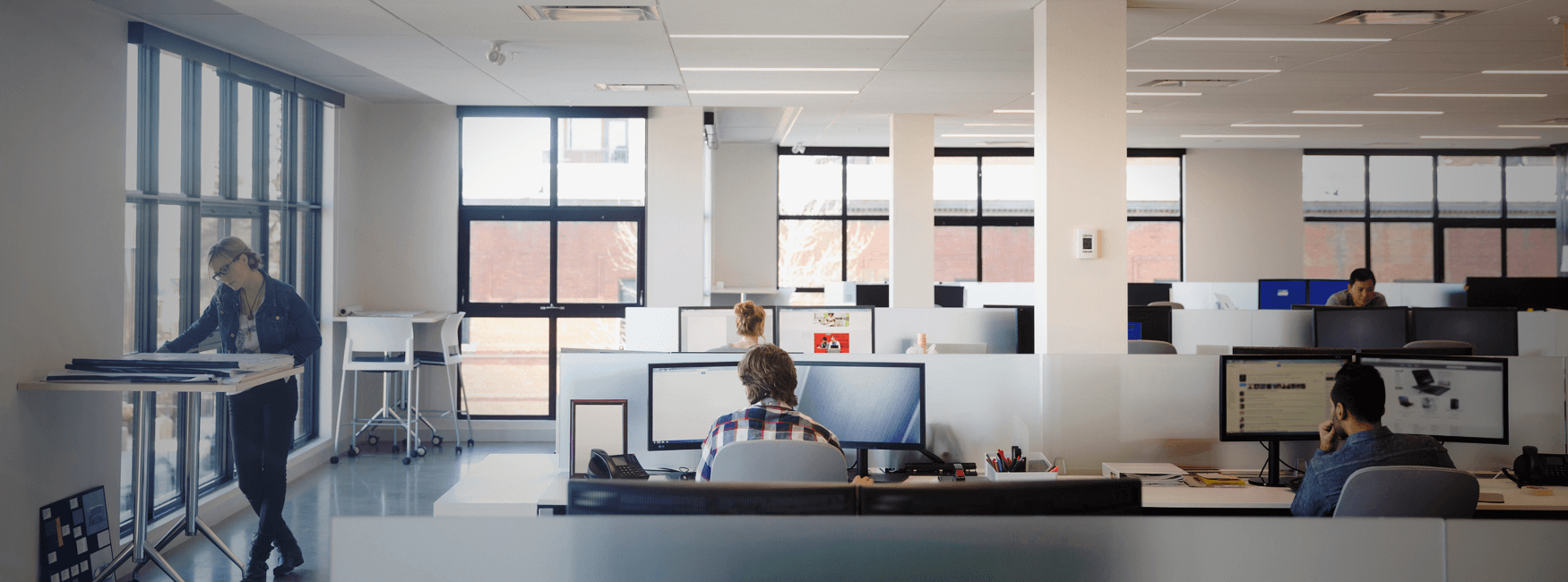
No matter the industry, workplace safety should be a top priority for any company.
Keeping employees safe and happy means finding the delicate balance between monitoring the building while maintaining a healthy level of privacy.
With the rise of new technology comes new opportunities for issues and accidents to arise, but so do opportunities to build solutions. It’s largely in-part, up to facility managers (FMs) to make sure the company is informed on how to plan for the worst while minimizing daily risks.
While there are new strategies that FMs can implement to enhance safety through the COVID-19 pandemic, there are also pre-existing risks that can be solved with much of the same technology currently being leveraged to keep the post-coronavirus workplace safe.
In this article, we’re taking a look at the role FMs play in workplace safety and how new technology can help mitigate various risks.
Why do workplace hazards exist?
Many things can be considered a workplace hazard. According to the Canadian Centre for Occupational Health and Safety, a hazard is any source of potential damage, harm, or adverse health effects on something or someone. The keyword being “potential,” so it’s important to consider the factors that could result in an accident or injury.
Workplace hazards are, unfortunately, a common occurrence. In 2018, a total of 5,250 fatal work injuries occurred in the US, with 2,080 incidents being transportation-related.
So, why is this happening?
Workplace hazards happen due to a culmination of several issues:
- Lack of transparency and communication around potential risks
- Being lenient on safety procedures
- Unsafe working conditions
- Lack of training
- An apathetic workplace culture
- Workplace distraction (e.g., noise, notifications, unprofessionalism, etc.)
There are all sorts of reasons why workplace accidents and incidents happen. With various events happening at an office or worksite at any given time, mistakes are bound to occur. The good news is that several kinds of technology exist today that can improve workplace safety across the board.
Increase workplace connectivity
One of the critical components of reducing workplace hazards involves having a pulse on every aspect of the work environment. If employees have a better understanding of how things work as a whole—like employees in a manufacturing plant with heavy machinery, for example—the risk of an accident is greatly reduced.
How can employees gain a better sense of how the workplace functions as a whole? Sensors are a great solution. This technology can help link your physical and digital workspaces together.
Sensor technology can bridge the gap between departments, equipment, and other components of an organization and keep everyone in the loop regarding what’s happening at any given time. If employees are more aware of the working environment of the company thanks to insight from sensors, they can prevent accidents from happening.
For example, a company can install sensors in select areas of the workplace that notify the right departments when something needs to be addressed before an accident occurs. Another alternative could be tracking the physical state of employees using desk sensors. Occupational data from desk sensors can give insight as to where employees are at any given time and improve connectivity and communication.

Upgrade building monitoring with a BAS
Building automation systems (BAS)—a system that uses both software and hardware to connect building systems like HVAC, lighting, security, and more—are a game-changing tool for facility managers. These systems can be an integral part in identifying areas where the company could cut costs, like lighting or air conditioning, and make for a more sustainable building.
You can use your facility’s BAS to alert you about a variety of issues, such as:
- Temperature
- Air quality and CO2 detection
- Building security (e.g., if a door or window is left open)
Some BAS include smoke control systems in areas like stairwells and can seal off portions of a building and control air pressure as needed.
Having a pulse on what’s going on inside and outside the building can not only help fix issues in real-time using data but can also help with preventative and predictive maintenance.

Leverage workplace software to plan for emergencies
A significant part of maintaining workplace safety involves proper planning. You can prevent accidents or issues from happening, but the reality is that problems can still arise. So it’s best to be prepared if and when emergencies happen.
Workplace software can help you prepare an emergency evacuation plan thanks to its level of detail and accuracy. FMs can use workplace software to identify where health and safety elements are, like emergency exits and gathering places, so there’s no confusion about where to access these resources in case of an emergency. FMs can also use workplace software to locate emergency supplies like fire extinguishers, flashlights, repair kits, and more.
With workplace software, not only is it easier to plan for an emergency, but it’s easier to keep employees in the loop because it’s always up-to-date and is accessible by all.

Reduce cyberattacks with security software
With the transition to cloud-based storage systems comes the risk of cyberattacks from unsuspecting hackers.
Cyberattacks are not only dangerous, but they’re expensive. In fact, the average cost of a data breach is expected to exceed USD 150 million in 2020. Not only would your data (and your client’s, if applicable) be put at risk, but you run the risk of having to pay any recovery costs associated with an attack. That can be detrimental to a business.
Plus, with 95% of cybersecurity breaches being a result of human error, companies can’t afford not to have a reliable security system in place.
To keep your company’s data and your client’s data secure, investing in security software that focuses on preventing cyberattacks is a must. Not only does a cloud-based data security system keep your company’s data archives safe, but it ensures your data collection process is safer, too.
Create a comfortable work environment with ergonomic furniture
No one is unfamiliar with the risks associated with sitting all day long. According to JustStand.org, 3.2 million people die each year due to complications related to physical inactivity. With the average person sitting 12 hours per day, this information is startling.
Therefore, introducing ergonomic furniture into your workplace can have a profound impact on the health (both physical and mental) of your employees.
There are several benefits to ergonomic furniture:
- Improve back posture
- Better circulation
- Lower blood sugar levels
- Improve productivity
- Enhance memory
Ergonomic furniture, like standing desks, ergonomic chairs, and improved lighting, can provide employees with a comfortable workplace set up so they can feel their best all day.

Technology can improve workplace safety when applied correctly
The way people are working (especially over the last few weeks) has changed dramatically, and to improve workplace safety, companies must adapt.
Reducing workplace hazards starts with proper planning and effective communication. Accidents are bound to happen—we are human, after all—but the technology available to us can greatly help reduce those accidents.
At OfficeSpace Software, we help solve company problems with our advanced workplace platform.
Contact us today, and our team will help find the solution that’s right for you.
Photo Credits: energepic, ar130405, Ümit Yıldırım, Jan Alexander, Christina Morillo




